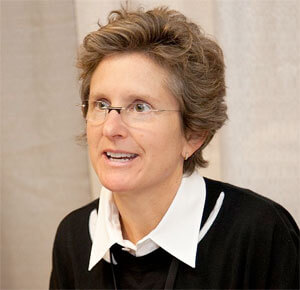Maggie Taylor received her BA degree in philosophy from Yale University in 1983 and her MFA degree in photography from the University of Florida in 1987. After more than ten years as a still life photographer, she began to use the computer to create her images in 1996. Her work is featured in Adobe Photoshop Master Class: Maggie Taylor’s Landscape of Dreams, published by Adobe Press in 2004; Solutions Beginning with A, Modernbook Editions, Palo Alto, 2007; and Alice’s Adventures in Wonderland, Modernbook Editions, Palo Alto, 2008. Taylor’s images have been exhibited in one-person exhibitions throughout the U.S and abroad and are in numerous public and private collections including The Art Museum, Princeton University; The Fogg Art Museum, Harvard University; Harn Museum of Art, University of Florida; Museum of Fine Arts, Houston, Texas; and The Museum of Photography, Seoul, Korea. In 1996 and 2001, she received State of Florida Individual Artist’s Fellowships. In 2004, she won the Santa Fe Center for Photography’s Project Competition. 2005 she received the Ultimate Eye Foundation Grant. She lives in Gaineville, Florida.
From en.wikipedia.orgMaggie Taylor (born 1961 in Cleveland, Ohio) is an artist who works with digital images. She won the Santa Fe Center for Photography's Project Competition in 2004. Her work has been widely exhibited in the United States and Europe and is represented within the permanent collections of several galleries and museums. She is the third wife of American photographer, Jerry Uelsmann. She produces prints by scanning objects into a computer using a flatbed scanner, then layering and manipulating these images using Adobe Photoshop into a surrealistic montage.
